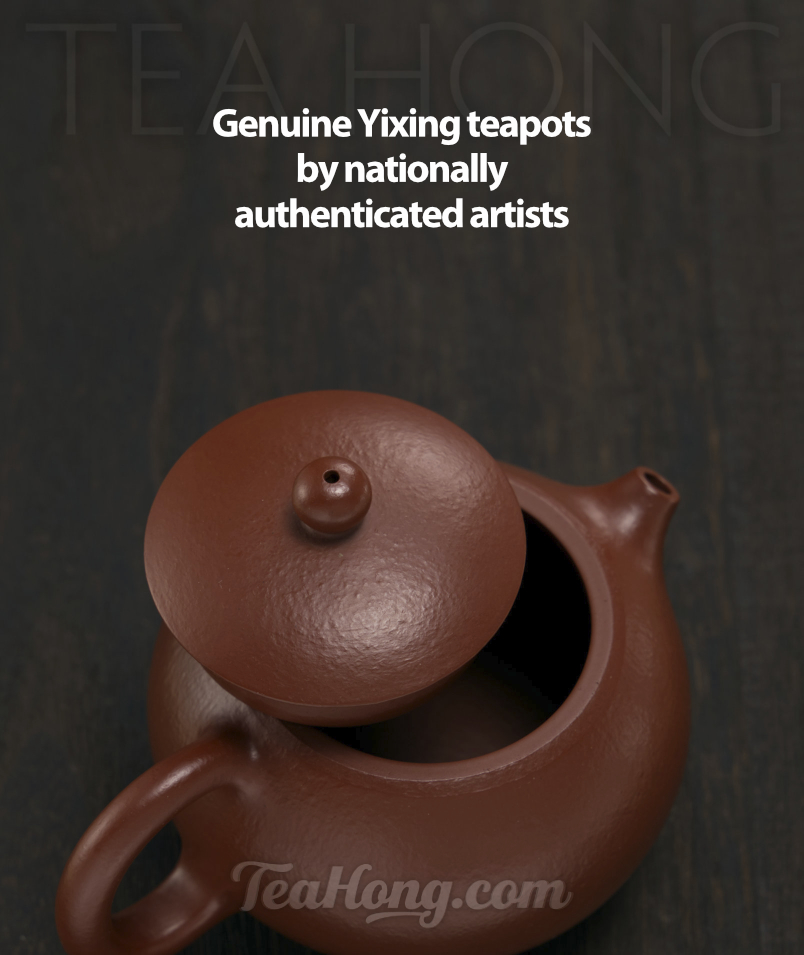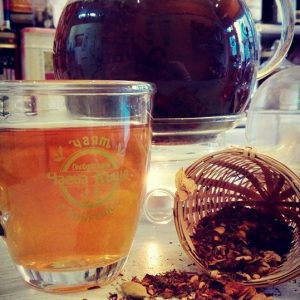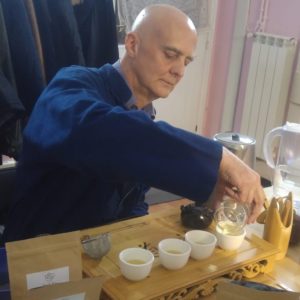Black Tea: Origin & Production
- William Pitt the Younger, the young and powerful British Prime Minister who introduced the multi-purposed Commutation Act, turning Britain into the single most influential tea importer in the subsequent century.
- Wu Ping-chien (aka Woo Pingkien), better known as Howqua by the West, the third generation owner of the I-Ho Hong, a largest trading company in Guangzhou, and one of the richest men in the world at his time.
Right: Wu Ping-chien (aka Woo Pingkien), better known as Howqua by the West, the third generation owner of the I-Ho Hong, a largest trading company in Guangzhou, and one of the richest men in the world at his time.
it’s all about economy
Not only was red tea production a more simplified process that needed much less fuel and labour compared to oolong, but it could use leaves that are either younger or older than oolongs, allowing for more harvests each year. It was a logical solution in response to the needs for quantity and lower costs for export. Soon the process was spread to areas that were not key or famous tea production regions (6), but close enough to the route to the export port that was Guangzhou (Canton). Some county chronicles documented that tea merchants from Guangdong and Jiangxi went to their territories to persuade the making of red teas starting from 1830’s. I believe that they had done it much earlier in other locations.
In 1784, the young British prime minister William Pitt introduced the historic Commutation Act, reducing tea tax from 119% to 12.5% to fight tea smuggling, amongst other purposes. He was successful. Not only did tea become affordable by the mass, but the government was actually earning more tax. Tea import by the West, mainly to England, increased from 18.9 million pounds a year in the 1780‘s to 26.7 million pounds in the 1790’s, and not stopping (7). Without the presence of the quicker turn-around red teas and extended production bases, it was impossible to satisfy such demand. By mid 1850’s, almost all provinces south of Yangtze River became red tea producers.
Came Robert Fortune and the East India company
This production process was later to be picked up by the British in the newly setup plantations in Assam in their Indian colony with imported skill labour from China. The Dutch did that as well in Indonesia, even a bit earlier. From the start, the British planned on scale; tea gardens became plantations; scattered and localized production huts in Fujian became centralized factories in Assam; very soon manual processing were replaced by machines — all in line with the spirit of the reigning Industrial Revolution of those days. Since 1888, black tea export from India had started to take over that of China and replaced it by the turn of the century.

An etching by J.L. Williams after Thomas Brown’s in 1850 depicting tea production in Assam. Clearly all key stages of production were conducted by Chinese. The truthfulness of the depiction is in doubt (8), but the Chinese presence in founding tea production in Assam is clear. Source: Wellcome Library, London
As Europe continued to colonize other parts of the world, exploitable labour resource in the conquered land together with the scalable India model made it financially viable to set up huge tea plantations. Nepal, Bengal (now Bangladesh), Ceylon (now Sri-Lanka), Indonesia, Kenya, and Nyasaland (now Malawi) joined in at different points of history to export tea to satisfy the ever-expanding quantity need. These countries continue to be black tea exporters today. Recently, even United States and Australia have set up productions for mass market quality. Only a minority have picked up the tea habit themselves. For example, over 97% of the tea made in Sri Lanka is exported. Seems weird, but maybe they are paid so poorly that they can’t even afford the factory price. (more about the social economy of tea production)
Though one stream of development in China had followed the industrialization route, another continued to specialize in artisan skill mastery. Each locality boasts to be different from the other, finer in taste style, workmanship, horticulture, and process uniqueness. This became the category of Gongfu Hung Cha (translation: red tea which making demands hard-work and mastery). The British had liked the prestige of the name so much that they still keep the name for some of their labels, although not necessarily reflecting the quality of the content — Congou, which is a romanization of the Amoy dialect for Gongfu.
Only the finer Gongfus will be the focus of this category in this site, which I think is totally different from factory products, although some better “orthodox” productions from various origins will also be described.
- A Dutch (third from left, wearing the pith helmet) supervising tea plucking in Indonesia, possibly 1910, photo by Wijnand Elbert Kerkhoff
- Chinese Foreman, Lau-Dzhen-Dzhau, at the Chakva Tea Farm in the Black Sea area near Batumi, in present day Georgia, c. 1907-1915. It was fashionable in those days for Chinese rural gentry to wear traditional Qing formal suit, such as that he is wearing, including the hat, together with a Western style decoration batch, when one has it. Certain labourer export seemed to have received more respects than others. Photograph by Sergei Mikhailovich Prokudin-Gorskii
Right: Chinese Foreman, Lau-Dzhen-Dzhau, at the Chakva Tea Farm in the Black Sea area near Batumi, in present day Georgia, c. 1907-1915. It was fashionable in those days for Chinese rural gentry to wear traditional Qing formal suit, such as that he is wearing, including the hat, together with a Western style decoration batch, when one has it. Certain labourer export seemed to have received more respects than others (8). Photograph by Sergei Mikhailovich Prokudin-Gorskii (9)
Production
As mentioned, black tea was invented as a way to shortened production time and fuel cost in place of oolong production. The original process was divided in these steps:
- withering
- curling (and kneading)
- piling up and cover for fermentation (normally 2 to 3 hours, 7 to 8 hours in Xiao Zhong varieties)
- twisting (only in certain varieties)
- baking
Compare this with the oolong process. Oxidation was sped up through breaking of the leaf cells early on, and by piling the leaves in a one step fermentation process.
The English further hastened it by introducing heat and mechanized the whole process. Later on in the 1930’s they even began to cut and tear the leaves before briefly curling them (CTC) to shorten the whole process, dramatically compromising quality for cost.
The lowered price strategy was successful in training the mass to alter palatial sensitivity and get accustomed to the CTC taste. The process was later to be adapted for tea processing for other tea categories. Traditional automated productions involving the whole tealeaves, particularly those in India, are labelled as “orthodox” teas to differentiate from these torn leaves labelled as “broken’ grades.















2 Responses
[…] Black tea ranges from neutral to warm in TCM nature, with the exception of Darjeeling, which, depending on the processing particulars, ranges from cool to cold. Use a respectable, whole-leaf quality anyways, such as a good Minhong, so you can ensure a great polyphenol amount, as well as a delightful drink without cream and sugar. […]
[…] refer to the article on the Origin of Black Tea […]